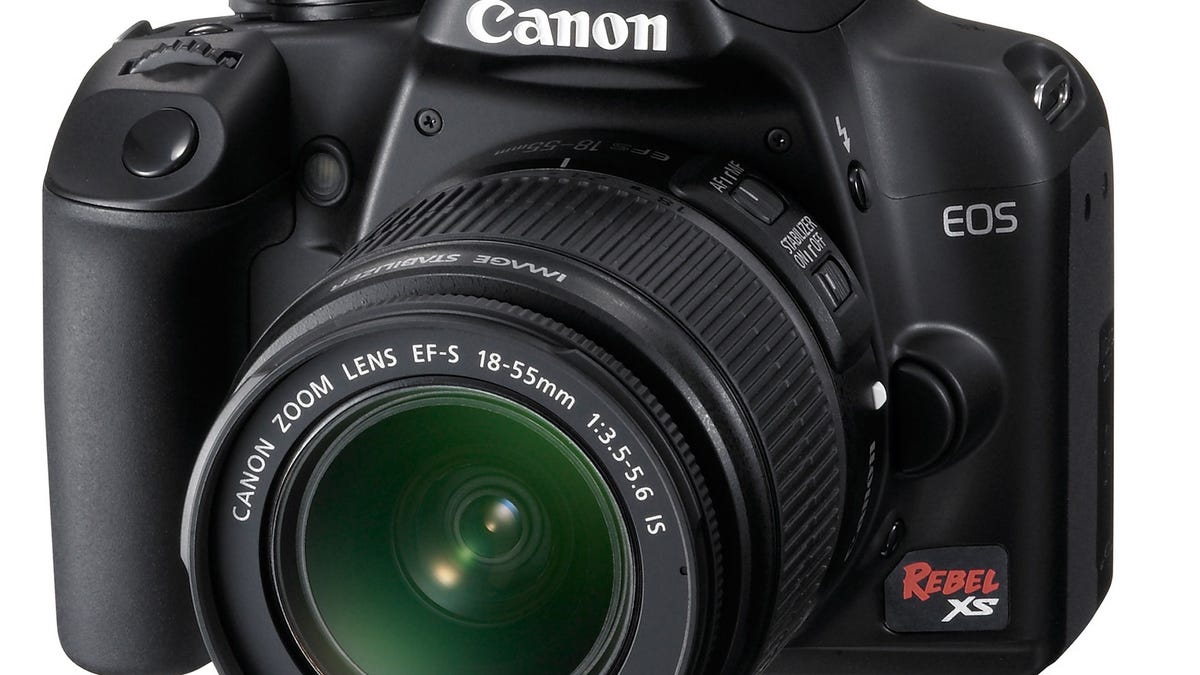Canon's EOS Rebel XS
The Canon EOS Rebel XS is a new entry-level digital SLR that provides an update on the older EOS Rebel XTi in the body of the new XSi.

updated 7/8: Today, Canon USA announced pricing and availability for the U.S. it looks like the company's only selling a kit version, with the EF-S18-55mm f/3.5-5.6 IS lens, for $699.99, and it's slated to ship next month.
(June 9) Say what you will about the rumor mill, it frequently comes through. In this case, except for the small detail of when it would be available, rumors about the Canon EOS Rebel XS turned out to be true. However, instead of waiting until Photokina to announce it, Canon debuted the new entry-level dSLR today.
The new Rebel, which replaces the
Check out our preview video and comparative specs after the jump.
For the new camera, Canon is shifting from the nine-point AF of the XTi, however, to seven-point AF; the company says it provides a significant cost savings. We won't know if it will result in a tradeoff in autofocus performance until we get it in to the lab, though. Regardless, it still looks like a significant threat to its primary competitor, the Nikon D60, which only has three AF points.
Here's how it stacks up:
| Canon EOS Rebel XSi | Canon EOS Rebel XTi | Canon EOS Rebel XS | Nikon D60 | |
| Sensor | 12.2-megapixel CMOS 22.2 x 14.8 mm | 10.1-megapixel CMOS 22.2 x 14.8 mm | 10.1-megapixel CMOS 22.2 x 14.8 mm | 10.2-megapixel CCD 23.6 x 15.8 mm |
| Continuous shooting | 3fps 53 JPEG/6 raw | 3fps 27 JPEG/10 raw | 3fps unlimited JPEG/6 raw | 3fps 100 JPEG/6 raw |
| Viewfinder | 95 percent coverage 0.87x magnification | 95percent coverage 0.80x magnification | 95 percent coverage 0.87x magnification | 95 percent coverage 0.80x magnification |
| Autofocus | 9-pt AF | 9-pt AF | 7-pt AF | 3-pt AF |
| Live View | Yes | No | Yes | No |
| LCD size | 3.0 inches | 2.5 inches | 2.5 inches | 2.5 inches |
| Price (before rebates) | $699 (body only); $799 (w/ 18-55mm lens) | $599 (body only); $699 (w/ 18-55mm lens) | $699.99 (w/ 18-55mm lens) | $599 (body only); $699 (with 18-55mm lens) |
| Availability | Now | Now | Now (outside of U.S.); August (U.S.) | Now |
Like other Canon entry-level dSLRs, the XS will be available in black or silver, and each in a body-only or kit version. The EOS Rebel XS is slated to ship a bit earlier overseas than it is here, and Canon hasn't quite finalized pricing. It should be in the same ballpark as the XTi is now, though. In conjunction with the XS announcement, Canon is also rolling out a new version of its lightweight flash unit, the Speedlite 430EX II. It's designed to work in conjunction with the newer models for displaying flash data on the camera screen, moves the physical master/slave switch into the menus, and now sports a metal foot rather than plastic. The flash will ship at the same time as the camera, and be priced $329.99, the same as its predecessor did at launch.

